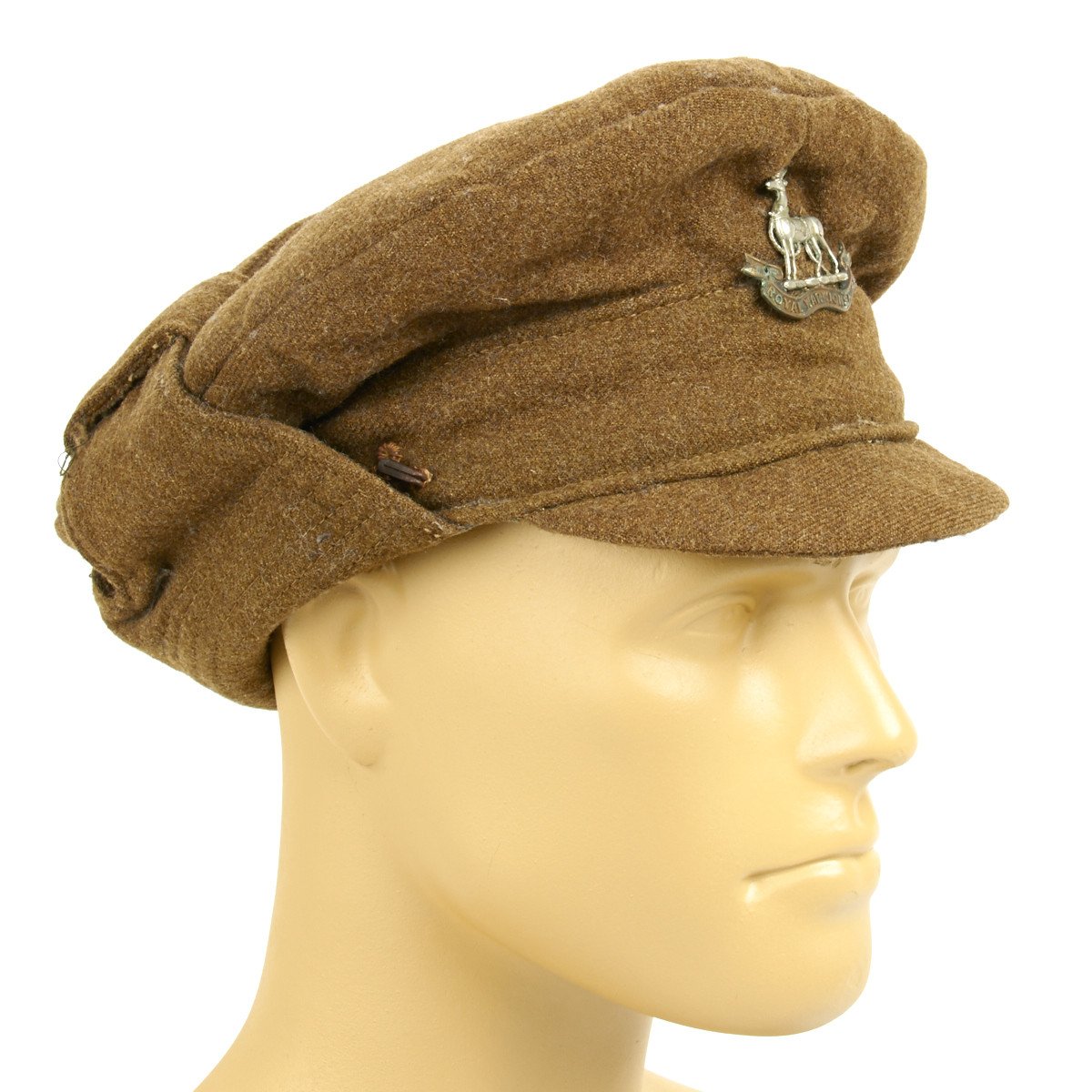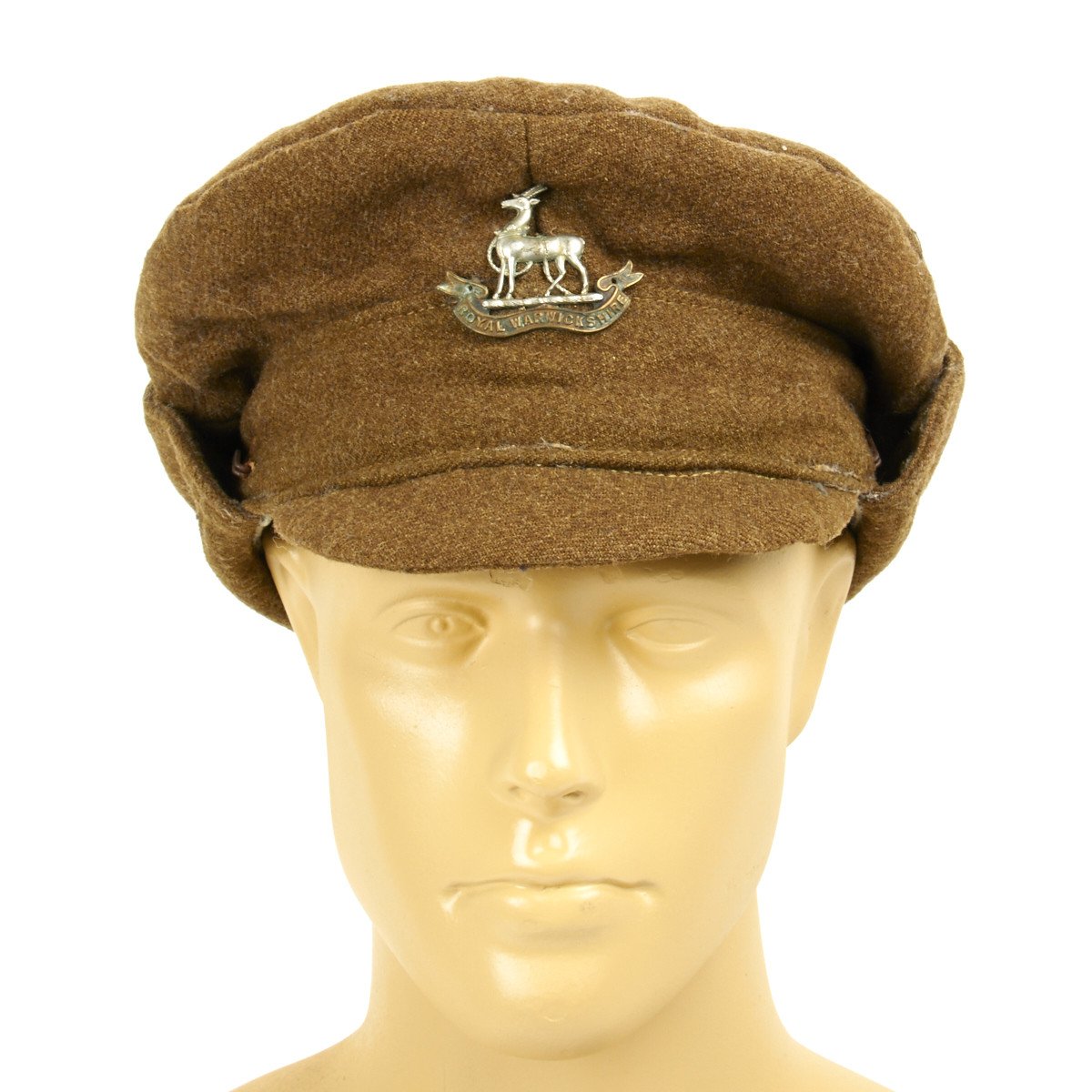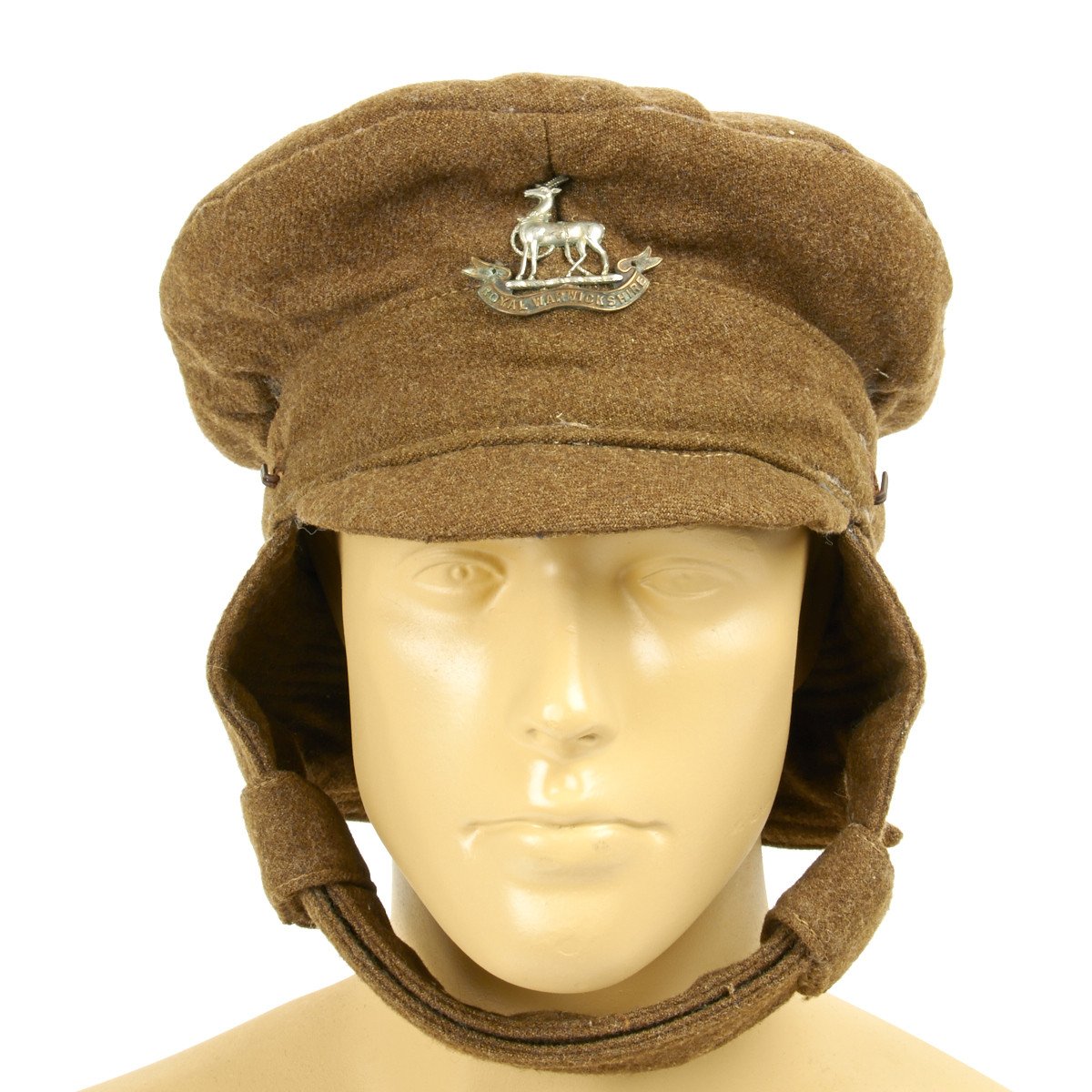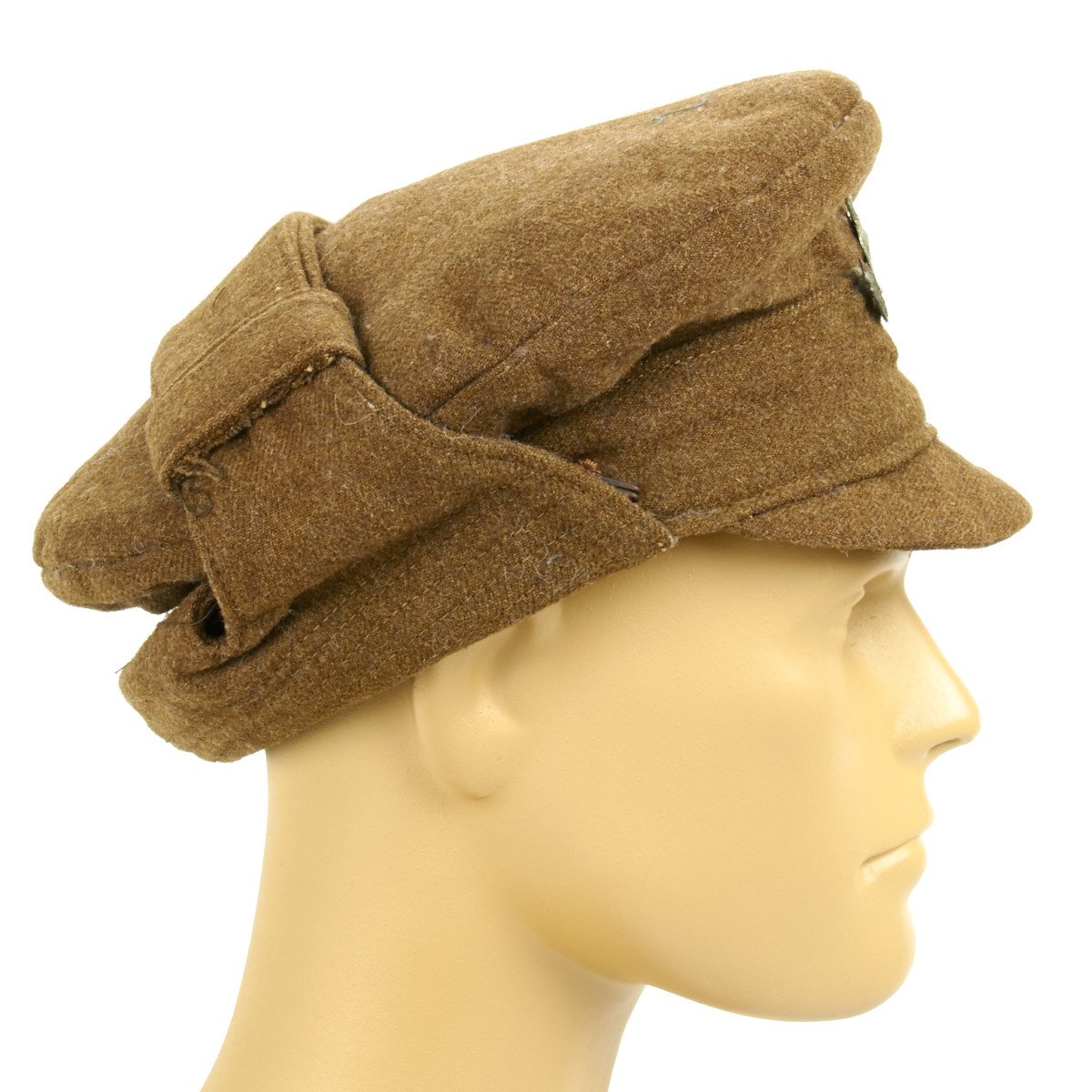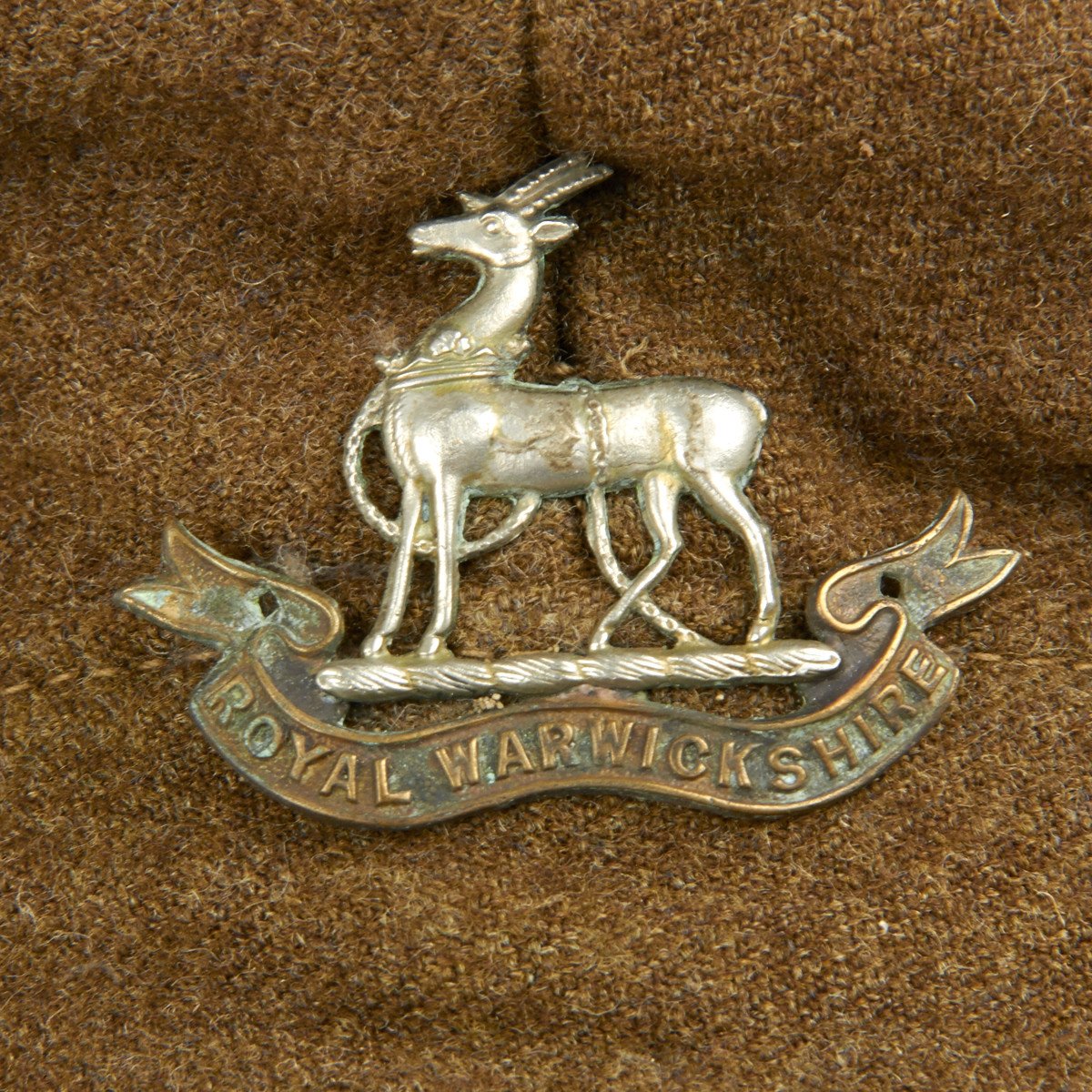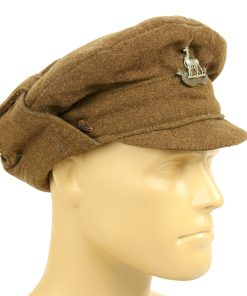Original British WWI Gor Blimey 1915 Winter Forage Trench Cap – Royal Warwickshire Original Items
$ 3.495,00 $ 873,75
Original Item: Only One Available. This is a stunning example of an original vintage wool constructed trench cap hat as used by Great Britain in WW1. Features of note include a correct cut, shape, color, genuine wool construction, quilted lining with correct bulls-eye pattern stitching, as well as a fine brass regimental badge of the Royal Warwickshire Regiment.
This genuine WW1 cap is extremely rare with only a handful of genuine known examples on earth. This is the original item that we used to produce our stunning reproduction. It is offered in very good condition with minimal wear. The size is approximately 56cm (US 7). You will not find another available on the market anytime soon!
History of the Gor Blimey: When Commonwealth troops found themselves locked in trench warfare in the first winter of 1914, the SD cap was proven to be inadequate. Although troops were issued with a balaclava it could not be worn under the SD cap. The answer to this need was the rapid introduction of the “Cap, winter, Service Dress’ known as the “Gor Blimey”. The cap was never intended to be worn in the UK and only authorized for wear by troops on active service. The “Gor Blimey” appears to have been disliked by the Command Structure for its lack of military appearance, but liked by the troops for its relaxed look and functionality.
The Winter forage cap was made from the same drab wool as the SD cap but did not have rigid stiffening to the top, body, or visor. It was heavily padded and lined with quilted shirt material. It had an external neck flap that when not in use folded up onto the top of the cap and secured with a cloth slider. For this reason, there was no leather chinstrap.
It appears that in May of 1916 when the Helmet Steel Mark 1 became individual issue, the winter forage cap was withdrawn from service although it was not completely withdrawn until 1917. As helmets would now be worn at all times in the front lines, and allowed the wearing of a balaclava underneath, the need for a front-line winter cap was redundant. Although never manufactured in Canada, it was popular with Canadian troops.
Fast Shipping with Professional Packaging
Thanks to our longstanding association with UPS FedEx DHL, and other major international carriers, we are able to provide a range of shipping options. Our warehouse staff is expertly trained and will wrap your products according to our exact and precise specifications. Prior to shipping, your goods will be thoroughly examined and securely secured. We ship to thousands clients each day across multiple countries. This shows how we're dedicated to be the largest retailer on the internet. Warehouses and distribution centres can be located throughout Europe as well as the USA.
Note: Orders with more than one item will be assigned a processing date depending on the item.
Before shipping before shipping, we'll conduct a thorough inspection of the items you have ordered. Today, the majority of orders will be delivered within 48 hours. The delivery time will be between 3-7 days.
Returns
The stock is dynamic and we cannot completely manage it because multiple stakeholders are involved, including our factory and warehouse. So the actual stock may alter at any time. It's possible that you may not receive your order once the order has been made.
Our policy is valid for a period of 30 days. If you don't receive the product within 30 days, we are not able to issue a refund or an exchange.
You can only return an item if it is unused and in the same state as the day you received it. You must have the item in its original packaging.
Related products
Uncategorized
Uncategorized
Uncategorized
Uncategorized
Uncategorized
Band of Brothers ORIGINAL GERMAN WWII Le. F.H. 18 10.5cm ARTILLERY PIECE Original Items
Uncategorized
Angolan Rebel 1970s era 60mm Inert Display Mortar from Angolan Civil War Original Items
Uncategorized
Uncategorized
Uncategorized
Uncategorized
Armoured Fighting Vehicles of the World: AFVs of World War One (Hardcover Book) New Made Items
Uncategorized
Armored Burgonet Helmet & Polearm from Scottish Castle Leith Hall Circa 1700 Original Items
Uncategorized
Uncategorized
Uncategorized
Uncategorized
Uncategorized
Uncategorized
Uncategorized
